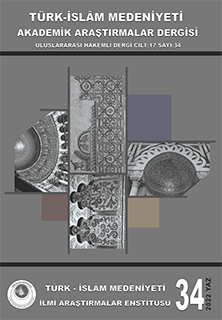The Origins of Monasticism in Christianity
DOI:
https://doi.org/10.5281/zenodo.6526335Keywords:
Monasticism, Church, Monastery, Cynic, Orphism, Sexual AbstinenceAbstract
We see some early examples of monasticism in local pagan religions and naturebased belief-systems before the time of Christianity, and even in some sects of Judaism. In particular, the Cynics and Manichaeans' acts of alienation from the world, and their extreme tendency to celibacy, continued to exist in eastern religions in a remarkable way. Two main sources are particularly useful concerning the ascetic lifestyle of Jesus Christ and John the Baptist: i. the ascetic practices of local pagan religions, ii. It would be the traditional remnants of the Celestial Religions that have been passed down through the centuries. However, notable in Christian monasticism is the suggestion that Jesus and St. Paul's cautious attitudes towards marriage indicate a certain degree of interaction with the remnants of both nature-based belief systems and Orphism. Christianity's idea of alienation from the world and sexual abstinence as prescribed in Holy Books has been accepted as the most prominent feature of Christian asceticism over time. In actuality, although Jesus and St. Paul spoke of both estrangement from and indifference to marriage as a recommendation rather than a commandment, monastic Christianity and Church Christianity considered this advice to be among the fundamental commandments of Christianity. Even extreme acts of ascetism beyond this were added, such as self-flagellation, fasting for days, and the seclusion of married men and women leaving their families in the name of piety. Although the Church occasionally took a stance against these movements, such practices could not be prevented. As such, this form of monasticism is almost an integral part of Christianity.
References
Lietzmann, Hans (2016). Eski Kilise Tarihi, IV. Cilt, Konya,2016
Matta: 11/18-19
Luka: 71/33
Markos: 2/18
I. Korintos: 9/15
Strathman, H. (1914). Geschichte der Fruhchristichein Askese, I.
Fehrle, E. (1910). Die Kultische Kearschert, im Altertum.
Romalılara: 14/1
Didaché, Eski Kilise Tarihi, I. Cilt.
Eusébe, Hist. Ecel. 6, 3, 9.
Rufin, Hist. Ecel. 11, 23.
Joséph, Vita, 11 m 12.
Athanase, Vita Ant., 46
Reitzenstein, R. (1914). Das Athanasins werk das keben des Antonius.
İdris, Bell (1924), Jews and christians in Egypt.
Downloads
Published
How to Cite
Issue
Section
License

This work is licensed under a Creative Commons Attribution-NonCommercial 4.0 International License.







